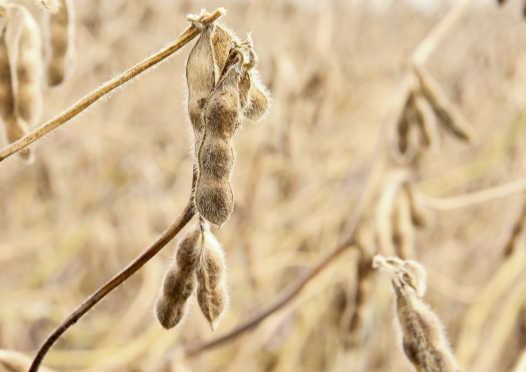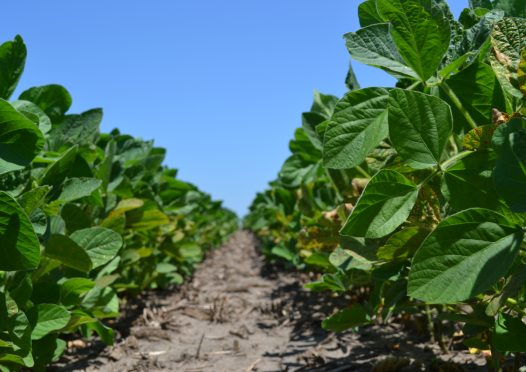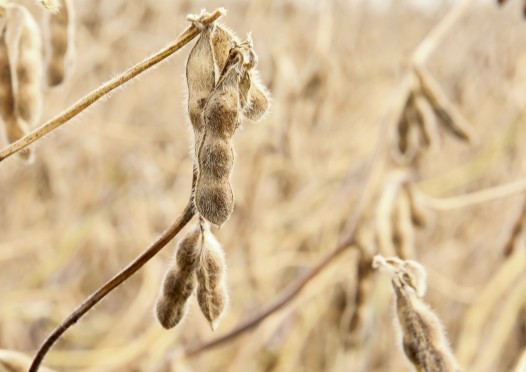ILSOYADVISOR POST
Agronomy: Breaking 100-Bushels through Management
Google "100-bushel soybeans" and a few inconsistent results pop up. However, some soybean growers are reaching this milestone more routinely. With variety selection, management and some luck from Mother Nature, more producers could increase yields to 100 bushels per acre.
"Both genetics and management come into play," says Jonathan Perkins, Southern Illinois Practical Farm Research (PFR) director for Beck's Hybrids.
Even with this year's wet spring and dry summer, many Illinois soybean producers say their soybean yields were higher than they thought their yields should have been.
"I think we're beginning to see what soybean genetics can really do, especially with the little rain we had late this year," says Doug Winter, a Mill Shoals, Ill., farmer and United Soybean Board (USB) director from Illinois.
Variety selection is a must, says Fred Below, Ph.D., University of Illinois crop sciences professor and author of the soybean checkoff-funded Six Secrets of Soybean Success. "Consider planting fuller season varieties to get the most time for plants to grow," he says.
On research plots, Below has seen a three-bushel per acre gain without any extra cost. With soybean prices at $13 per bushel, that's an increase of almost $40 per acre.
"You have to match seed selection to the right soil type and the right fields," Perkins says. One approach Beck's Hybrids tried at their Central Illinois PFR site was planting different soybean varieties in different parts of a field by management zones through their PFR Partner program.
Once seed variety is selected, management is needed to get the most from genetic potential.
"Farmers largely don't manage soybeans, but with more attention they can easily get 65-70 bushels per acre," Below says. "The next 15 to 30 bushels are trickier."

Remember the Basics
With continuing improvements in genetics, biotechnology and management, producing high-yielding soybeans is more attainable than ever, says Harold Watters, assistant professor for Agricultural & Natural Resources at Ohio State University. His biggest recommendation is to understand the fundamentals before chasing trends in yield-enhancement products or practices.
Marshall, Ill., soybean farmer and ISA Production Committee Chairman Don Guinnip agrees. "Begin with an emphasis on basic production principles. Manage pH, nitrogen, potassium and phosphorus," he says.
One of the most overlooked factors is fertility, Below says. For example, he believes soybean yields were higher than expected in 2013 because the crop took advantage of unused fertilizer from a 2012 corn crop that was fertilized for high yields but produced drought-induced lower yields. Below's four keys for increased soybean yields include fertility, variety selection, foliar protection and seed protection, especially for earlier planted varieties.
Farmers seeking higher yields need to manage insects, weeds and other yield-robbers. Perkins frequently sees resistant weeds that limit yield potential. He advises rotating herbicide modes of action or switching between Roundup and Liberty systems to help control these weeds.
"We're always try to produce more, but the genetics are changing and we have all these things that help get us to a new level, if we coordinate things at the right time," says ISA District 9 Director Tim Seifert. The Auburn, Ill., farmer does a lot of on-farm research, including about 35 acres dedicated to small plots and another 200 acres to whole-field plots.
In 2013, Seifert tried three practices that may help increase yields. First, he used soil-applied insecticides and fungicides, which led to a two- to three-bushel per acre increase. Second, he experimented with different applications of insecticides and fungicides, including none, one and both. Third, he applied nitrogen at the R5 growth stage and saw a five-bushel increase.
On Beck's Hybrids PFR sites in Illinois, Indiana and Kentucky, the teams have tried a few approaches that show potential, but are inconsistent, Perkins says. These include using the herbicide Cobra to stress the soybean plants and stack up nodes; mechanical damage such as rolling at various growth stages and post-emergence micronutrients.
Several soybean growers report success with seed treatments such as fungicides, insecticides and biologicals. Fungicides help with seedling diseases, insecticides help protect seedlings from early season insects, and biologicals help promote nutrient uptake.
"We've also seen a positive response with a foliar fungicide and insecticide application between the R2 and R4 stages," Perkins says.
Sidebar/Increase Yields without Sacrificing Profits
Although famers can strive for high yields, the goal can't come by sacrificing profitability, quality or the environment, says Seifert. "We have to be environmentally and conservation minded when planning these crops," he says.
In Southern Illinois, higher management leads to higher yields, but not necessarily a higher profit, Perkins says. The key is to find the right combination of genetics and production practices that lead to higher yields and higher profits.
The Illinois soybean checkoff is investing in programs to help soybean farmers reach 100 bushels per acre. For example, ISA created the Soybean College and Soybean Summits to help producers grow more soybeans. Last year ISA added the 100 Bushel Challenge to its annual Yield Challenge. An award of $5,000 was offered to the entrant with the greatest qualifying yield greater than 100 bushels.
"By setting a goal and reinforcing production practices, we are encouraging farmers to think about what they can do to get there," Guinnip says.
Consistently High Yields a Decade Away
While some growers are hitting 100 bushels in parts of their fields now, it may take five to 15 years to consistently hit the mark, Guinnip says. A variety in ISA At-Large Director Lynn Rohrscheib's test plot near Fairmount, Ill., hit the 100-bushel mark in 2013.
"I think it's possible within the next five to 10 years as we see better germplasm and increased management practices behind the soybeans," says Perkins.
Below is optimistic 100 bushels will be fairly routine in 20 years. But it will take planning, and trial and error. "I'm excited about the opportunities to increase yields with management," he says.
Amy Roady is director of communications with Illinois Soybean Association.
This article originally appeared in the January issue of Illinois Field & Bean.




Comments
Add new comment